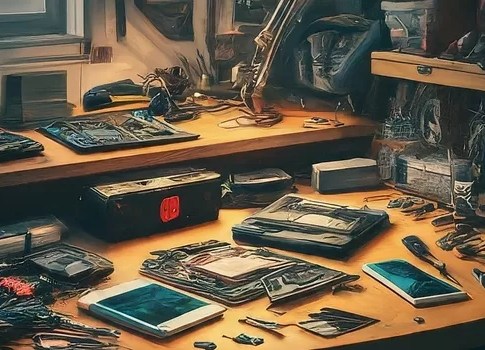In the quest for sustainable development, the concept of the circular economy has emerged as a transformative model. Unlike the traditional linear economy, which follows a “take, make, dispose” approach, the circular economy seeks to redefine growth by focusing on positive society-wide benefits.
It involves gradually decoupling economic activity from the consumption of finite resources and designing waste out of the system. This essay explores the principles of the circular economy, its benefits, challenges, and the steps needed for its successful implementation.
Advertisement:
Principles of the Circular Economy
At its core, the circular economy is based on three key principles: designing out waste and pollution, keeping products and materials in use, and regenerating natural systems. These principles are the foundation for rethinking how we produce, consume, and manage resources.
Designing out waste and pollution emphasizes the need to rethink product design from the outset. By considering the full lifecycle of products, designers can minimize waste and pollution.
This involves selecting materials that are non-toxic and sustainable and creating products that are durable, repairable, and recyclable.
Keeping products and materials in use promotes the idea of maintaining the value of products, materials, and resources in the economy for as long as possible.
This can be achieved through strategies like reusing, repairing, refurbishing, and recycling. For instance, product-as-a-service models, where consumers rent or lease products instead of owning them, can extend the lifecycle of products.
Beyond reducing harm, regenerating natural systems aims to create positive impacts by restoring and enhancing natural ecosystems. This involves returning valuable nutrients to the soil and other ecosystems, thus enhancing biodiversity and resilience.
Benefits of the Circular Economy
The transition to a circular economy offers numerous environmental, economic, and social benefits.
Environmentally, by reducing the extraction and consumption of raw materials, the circular economy significantly lowers greenhouse gas emissions and decreases environmental degradation.
It also reduces the burden on landfills and incinerators, thereby mitigating pollution and conserving natural resources.
Economically, the circular economy fosters innovation and creates new business opportunities. Companies can achieve cost savings by optimizing resource use and reducing waste.
Additionally, new markets and industries, such as recycling and remanufacturing, can emerge, driving economic growth and job creation.
Socially, implementing circular economy practices can lead to job creation and skill development. It also promotes a more equitable distribution of resources and contributes to the overall well-being of communities by fostering sustainable consumption patterns.
Challenges in Implementing the Circular Economy
Despite its numerous advantages, the transition to a circular economy faces several challenges. Technologically, developing and implementing the necessary technologies, such as advanced recycling processes and renewable energy systems, can be costly and complex.
Additionally, existing infrastructure may need to be redesigned to support circular practices.
Economically, the current system is deeply entrenched in linear practices, making the shift to a circular model difficult.
Companies may be hesitant to invest in new business models due to uncertain returns on investment. Market mechanisms that favor linear practices, such as subsidies for virgin materials, also pose significant hurdles.
Regulatory and policy barriers further complicate implementation. Effective policies and regulations that support circular practices are often lacking, and existing policies tend to favor linear economic activities.
Governments need to develop and enforce regulations that promote circular practices, such as extended producer responsibility and incentives for sustainable design.
Behaviorally, changing consumer behavior and business practices is crucial for the circular economy to succeed. However, this requires a significant shift in mindset.
Education and awareness campaigns are needed to promote the benefits of circular practices and encourage their adoption.
Steps for Successful Implementation
To overcome these challenges and successfully transition to a circular economy, coordinated efforts from all stakeholders are essential. Governments play a critical role in creating an enabling environment for the circular economy.
This includes implementing policies that promote sustainable design, provide incentives for circular business models, and penalize wasteful practices.
Investment in research and development is crucial to advancing the technologies needed for circular practices. Public-private partnerships can drive innovation and create scalable solutions.
Raising awareness about the benefits of the circular economy and educating consumers and businesses on sustainable practices is vital. This can be achieved through campaigns, workshops, and integration of circular economy principles into educational curricula.
Collaboration among businesses, governments, and civil society is essential to drive systemic change. Cross-sector partnerships can facilitate knowledge sharing, resource pooling, and the development of integrated solutions.
The circular economy represents a fundamental shift in how we view and interact with our resources. By embracing its principles, we can create a sustainable, resilient, and inclusive economy that benefits the environment, society, and economy.
While challenges exist, the combined efforts of governments, businesses, and individuals can pave the way for a circular future. As we continue to innovate and adapt, the circular economy offers a promising path toward a more sustainable world.
Circular economy – Further reading
A Circular Economy Handbook: How to Build a More Resilient, Competitive and Sustainable Business by Catherine Weetman
The Circular Economy: A User’s Guide by Walter R Stahel
Buy And Sell Second-Hand Goods: How To Turn Secondhand Items Into Fast Cash & Long-Term Investments: Methods To Make You Money, 2021 by Zoila Monger
Related stories
Cheaper Groceries, Stronger Communities with Box Divvy
Nesting Boxes: Creative Upcycling for Wildlife Conservation
Using Dish Sponges as Garden Beds to Grow New Life
AI driving a sustainable fashion industry
Massive Corporate Profits Amid Cost of Living Crisis
Global Food Production Dilemma: Grow & Buy Local
Can you rent out a Tiny Home, Granny Flat, Transportable building or Caravan
Do you want to live on an Intentional Community?




